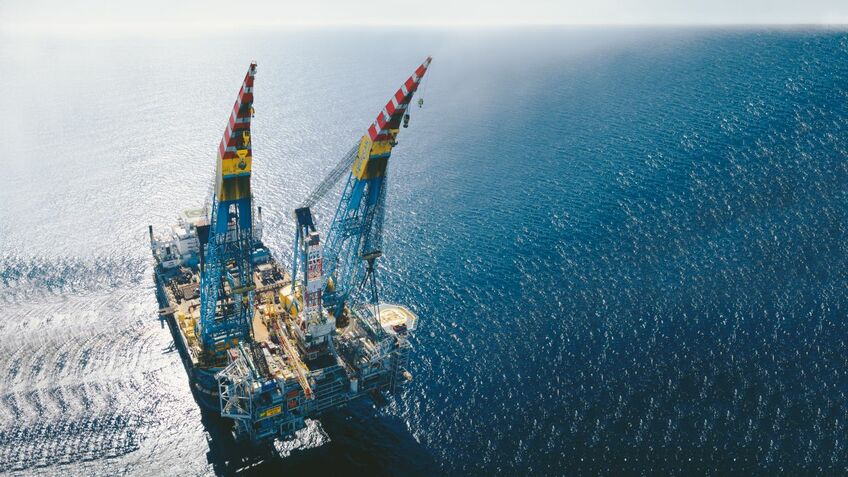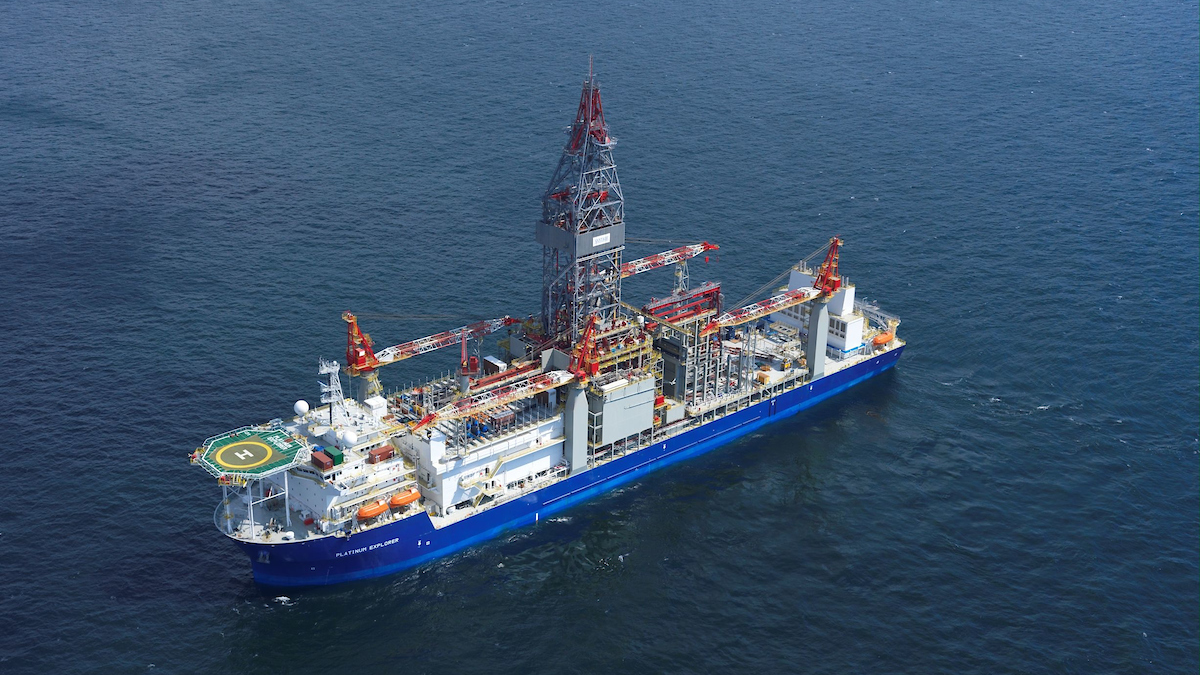Business Sectors
Events
Contents
De Hoop launches first KISS PSV and invests for the future
In January the hull of the first of the new vessels, Caballo Galiceno, which is being built for Oceanografia in Mexico, was moved from the yard’s shipbuilding hall for completion and outfitting.
The KISS design is a new type of cost-effective PSV intended for offshore supply operations including onboard preparation of drilling mud and reception of mud from a platform. Designed for worldwide service in an environmentally friendly manner, the design complies with all of the latest rules (including A.673) and is also designed to be construction-friendly in order to keep costs down.
The vessel has diesel-electric propulsion with the generators on the main deck; low fuel consumption; a high payload; a high level of redundancy and dynamic capability; and is able to carry a wide range of combinations of cargo. With a 430m2 deck and deadweight of 2,000 tonnes, the vessel has accommodation for 30 and a service speed of 12 knots.
De Hoop is building four of the vessels at its yard at Foxhol (all of which are for the Mexican owner) and planned to have the first vessel in the water by the end of April. All of the first four vessels are DP1 ships but the design can also be built to DP2 standard. Three are due to be delivered by the end of this year, with the fourth due to be delivered in the first quarter of 2012.
Each of the vessels has Caterpillar engines as the basis of the diesel-electric machinery, a pair of 900kW azimuthing thrusters aft and a tunnel thruster forward to enhance manoeuvrability.
The tank capacities include 980m3 of fuel oil, 160m3 of fresh water, 227m3 of bulk cargo, 306m3 of brine, 640m3 of mud and 770m3 of drill water. The mud tanks are equipped with mud mixing and liquid circulation systems. The discharge pumps are rated at 80m3/hour of fuel oil, 100m3/hour of liquid products, 80m3/hour of drill water, and 50 tonnes/ hour of mud.
De Hoop has also recently completed a three-year upgrade and modernisation programme at its Lobith shipyard. “The last three years have been all about modernisation of our Lobith yard. Now we are ready for the future,” said Patrick Janssens, CEO at De Hoop. “As a yard, De Hoop really wants to be a ‘one-stop shop’, providing facilities for all the key shipbuilding and shiprepair disciplines on one site.”
The modernisation programme began with the conversion of a building housing the yard’s canteen into offices and engineering facilities. This unit is now home to the production management department and has a variety of meeting rooms and a large conference room. It has been fitted with a new computer network, server and terminals.
“We have much better accommodation for our designers and engineers now, and the latest generation of CAD/CAM equipment,” Mr Janssens explained. “The new space we have available also means that we can accommodate additional engineering staff who are sometimes hired on a temporary basis at peak periods.”
At the same time that the new offices were being built the yard also built a new warehouse. New water, sewage, air and gas pipelines have been installed, along with a new compressed-air system with Atlas Copco compressors feeding into the network.
Large parts of the yard used to be laid to sand and gravel but these areas have now been fitted with Stelcon plates, which have made it much easier to move trucks, forklifts and other vehicles around the yard.
In order to enhance production and introduce a new, more flexible, integrated process, De Hoop has acquired a new computer-controlled steel-cutting machine and has enhanced its ability to carry out shiprepair work having dredged the harbour in the vicinity of the yard and built a new shiprepair facility which has already been used for work on 15 vessels. OSJ
Related to this Story
Women in Maritime Today: Elin Saltkjel says no day working in maritime is dull
Events
Maritime Environmental Protection Webinar Week
Cyber & Vessel Security Webinar Week
The illusion of safety: what we're getting wrong about crews, tech, and fatigue
Responsible Ship Recycling Forum 2025
© 2024 Riviera Maritime Media Ltd.













